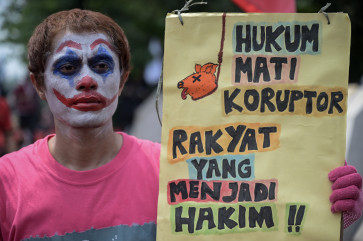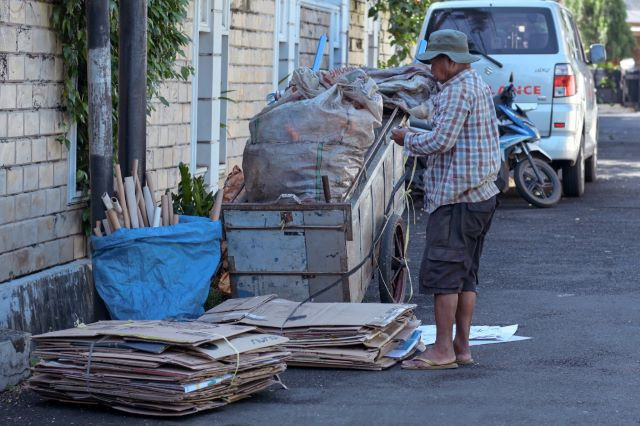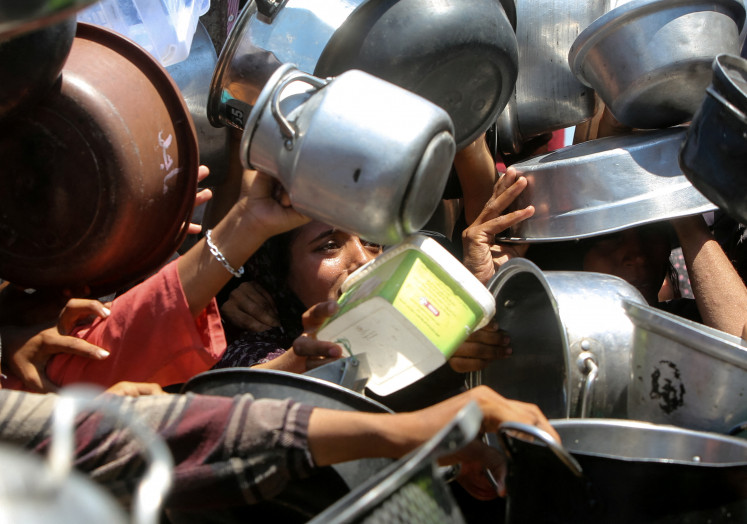Popular Reads
Top Results
Can't find what you're looking for?
View all search resultsPopular Reads
Top Results
Can't find what you're looking for?
View all search resultsBuleleng Hospital appointed as avian flu referral center
The Bali administration plans to include Buleleng Hospital as the province’s fourth avian flu referral center due to warnings of a potentially large outbreak occurring this year
Change text size
Gift Premium Articles
to Anyone
T
he Bali administration plans to include Buleleng Hospital as the province’s fourth avian flu referral center due to warnings of a potentially large outbreak occurring this year.
“We have received warnings from the central government about the possible emergence of avian flu cases in the province. Bali has experienced a high frequency of cases with casualties,” Bali Health Agency head I Nyoman Sutedja said on Tuesday.
The province’s other existing avian flu referral centers are the Sanglah, Gianyar and Tabanan hospitals.
Last year, Bali recorded 57 people that were treated as suspected avian flu patients.
Two children from the Jehem village in Bangli regency died after being testing positive for the disease last year.
To date, the administration has officially acknowledged four deaths due to avian flu.
The deaths occurred in Buleleng, Jembrana and Bangli. The first human to die of the disease was in 2007.
Bali’s first detection of avian flu occurred in 2003, when 100,000 chickens in the Jembrana, Badung, Karangasem, Klungkung regencies died suddenly.
The administration is currently focusing on improving the skills of the medical teams involved in the treatment of suspected avian flu patients at regency hospitals. Last year, an untrained medical team at the Bangli hospital caused delays in providing the right treatment for children and their mother.
Their referral to the Sanglah hospital in Denpasar came late.
The two children died soon after, followed by their mother.
Bangli Health Agency head Dewa Made Siangan said that after that incident, the medical teams at the Bangli hospital have received better training to handle suspected avian flu patients. “The equipment and special clothing are now available and we are ready to provide avian flu suspect screening before sending the patients to the nearest referral centers.”
The administration is also maintaining monitoring via the Participatory Disease Surveillance and
Response (PDSR).
“We are now on full alert as the poultry distribution has not been well controlled. There are still many poultry markets that have not thoroughly performed sterilization,” Sutedja said.
Although an increase in chickens suddenly dying or testing positive for the virus does not directly cause increased human deaths, Sutedja said that better cooperation with the Husbandry Agency is crucial as poultry remains the main source of avian flu.
The purchase of live poultry is still common in Bali, particularly during religious ceremonies.
The Bali Husbandry Agency said that the last cases of avian flu were discovered last November in
Badung and Bangli.
“We have not yet had any new cases. But we must remain cautious because the cases are increasing in some other provinces in Indonesia,” Bali Husbandry Agency senior official Ketut Mardiana said.
The Husbandry Agency has also been closely monitoring the possible mutation of the virus,
shown by different symptoms, like when a rooster’s cockscomb (crest) does not appear blueish, that are occurring in cases in other parts of Indonesia.










